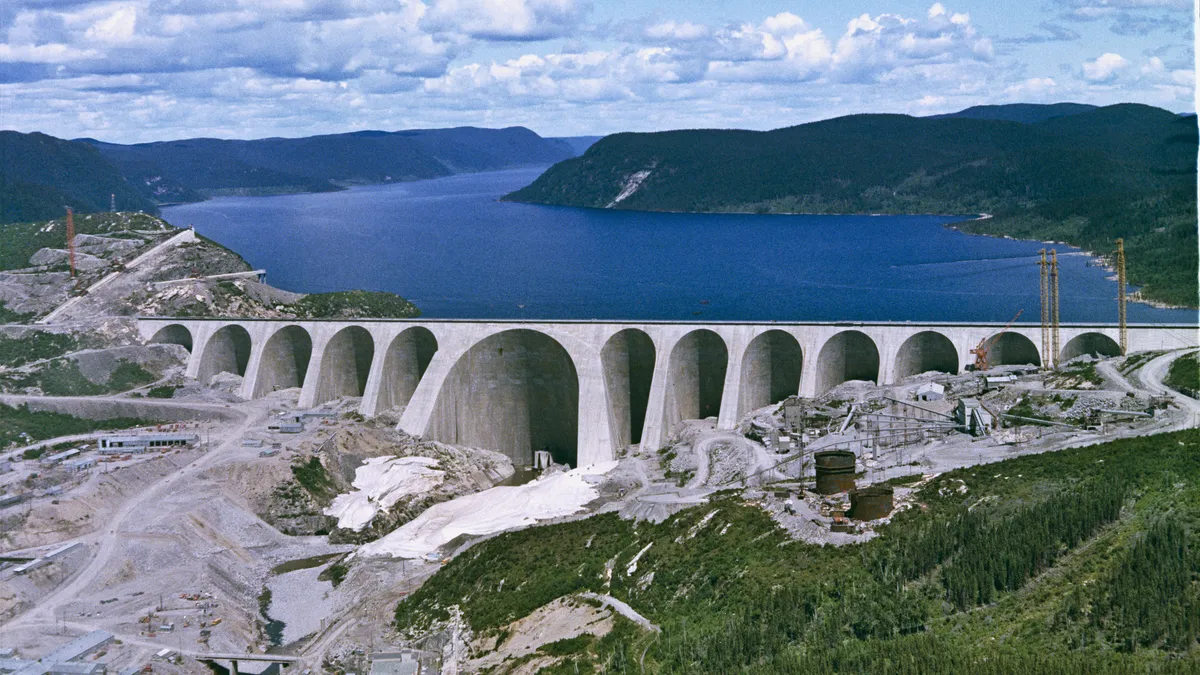Dive Brief:
- Drought conditions in California and other western states are leading to big cuts in the amount of electricity generated by hydropower plants in the region, according to a report by Moody’s Investors Service.
- The plunge in hydropower production has helped fuel a big increase in power prices in the Golden State, which hit their highest levels in five years over the summer, soaring 150% from May to July, according to Moody’s.
- The decline in hydropower, and the scramble to replace it with other sources, is putting financial pressure on local hydropower utilities in California and other western states. By contrast, big out-of-state energy companies that sell into the California grid, and which rely on other sources from renewables to natural gas and nuclear, are profiting as demand for their power surges, Moody’s reports.
Dive Insight:
Severe to exceptional drought conditions have descended over roughly 88% of the Western United States, according to the US Drought Monitor.
California, Arizona, New Mexico, Nevada and Utah, as well as Idaho, Montana, Oregon, and Washington have been baking under extremely high temperatures, with the worst hit areas experiencing crop failures, wildfires and water emergencies.
But the historic drought is also wreaking havoc with another major resource that western states have long relied on: hydropower. On Aug. 5, the California Department of Water Resources shut down the 644 MW Edward Hyatt hydroelectric power plant.
The department took the plant offline in response to a dramatic decline in water levels at the Oroville Dam reservoir, which had fallen to just 24% of capacity, according to Moody’s.
The Hoover Dam on the Colorado River, which generates electricity for California and other states in the region, has seen the capacity at its Lake Mead reservoir fall to 35%.
The drop in hydropower generation, in turn, has had a big impact on the California grid, which typically relies on hydropower to fill 15% of its power needs.
“That is the biggest point of stress,” said Clifford Kim, a vice president-senior credit officer at Moody’s and author of the report. “If the hydrology was normal, the California [power] market would not be under such stress.”
In addition to a spike in electric prices, the state’s power grid manager, the California Independent System Operator Corp., “has declared multiple alerts, warnings and orders this year to conserve energy, restrict planned outages of power plants or force power plants online to ensure reliability,” Moody's reports.
The drought and the falling water levels in reservoirs across the West are putting pressure on the credit ratings of hydropower utilities, the Moody’s report finds.
Hydropower producers like the Sacramento Municipal Utility District are on the hook for replacing lost hydropower with other sources, while the Middle Fork Project Finance Authority, a hydropower wholesaler that is also in California, will have less revenue to cover its debt service, according to Moody's.
“The high power prices and low hydropower generation caused by the recent drought are credit negative for hydropower owners,” the report states.
Hydropower utilities in the Pacific Northwest have also taken a hit in the amount of power they are able to produce, though they have held up somewhat better than their counterparts in California.
Through May, hydropower production in the Pacific Northwest was down about 17% from its five-year average for the same period, Moody’s reports.
However, the drop in hydropower production has helped bolster the bottom lines of big, out-of-state power generators like Calpine Corp., Vistra Corp. and Generation Bridge, a subsidiary of ArcLight Energy Partners Fund VII.
“High power prices are credit positive for non-hydro-dependent power generators that sell into the California power market,” Moody’s reports.
Still, Jim Stewart, co-chair of the Sierra Club California Energy-Climate Committee, does not see the drop in hydropower production endangering California’s drive to reduce greenhouse gas emissions to 40% below 1990 levels by 2030.
Rather, new wind and solar farms will pick up the slack, he said. While it is “slightly more expensive to construct new wind and solar farms than to use existing hydro plants, which have already been paid for … the climate benefits far outweigh the costs,” Stewart said in an email.













